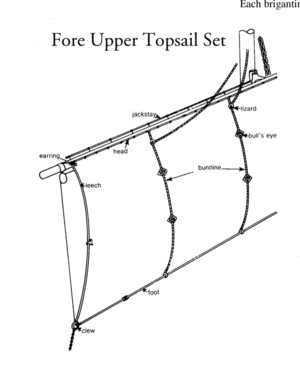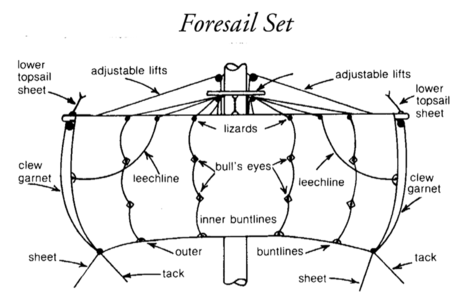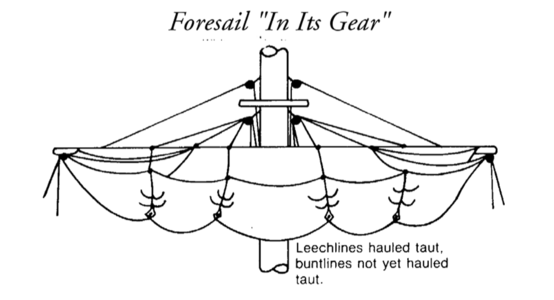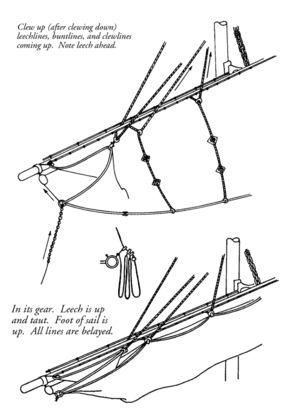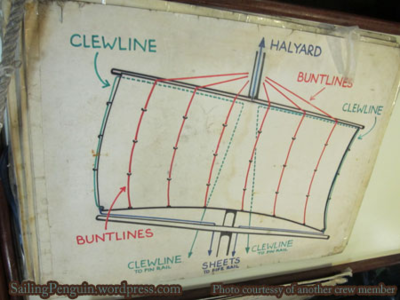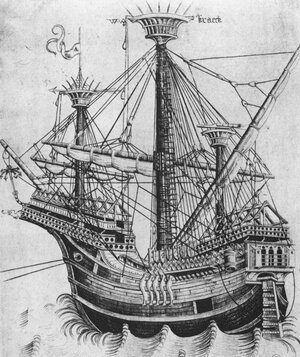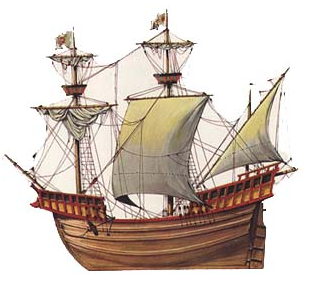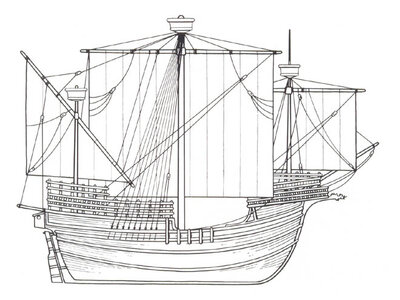On my Ragusian Carrack, I want to include Bunt Lines, but have seen conflicting information on them. I know the lines are connected to bottom of the sails, with ropes going to blocks in front of the sails, etc. But I get conflicting information as to whether the lines also go in the BACK of the sails and up to the spar.
This diagram from this post:
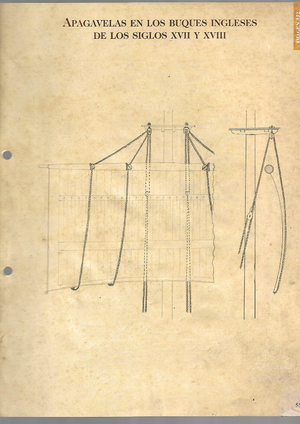
clearly shows them connected to cringles only at the FRONT of the sail. In addition, zo Mondfeld states "Bunt lines were carried on the fore side of the sail only."
While the diagram from this post:
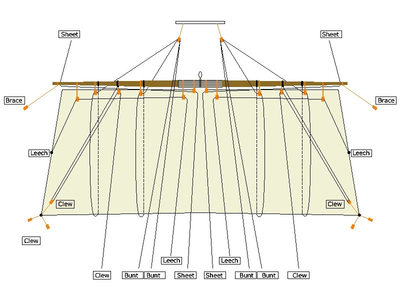
clearly shows them going under the sail and up to connect to the spar.
To me, though, attaching the bunt lines only to the front would not contain the sails when pulled up, but would instead case them to fold, allowing the center to drop down below the bottom, while lines on both sides would hold them very well. To explain what I'm saying, I made two diagrams:
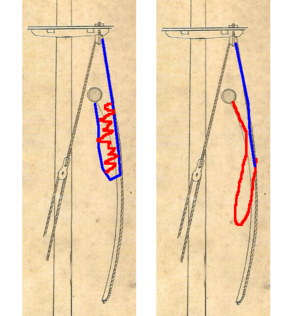
The above left shows how I think the sail would furl if the buntlines went around the bottom and up the back, while the above right shows how I think it would furl (more fold, in this case) if attached only to the front. I've never seen a sail that looked like the one on the right, only the left.
So, can someone please set me straight?
This diagram from this post:

clearly shows them connected to cringles only at the FRONT of the sail. In addition, zo Mondfeld states "Bunt lines were carried on the fore side of the sail only."
While the diagram from this post:

clearly shows them going under the sail and up to connect to the spar.
To me, though, attaching the bunt lines only to the front would not contain the sails when pulled up, but would instead case them to fold, allowing the center to drop down below the bottom, while lines on both sides would hold them very well. To explain what I'm saying, I made two diagrams:

The above left shows how I think the sail would furl if the buntlines went around the bottom and up the back, while the above right shows how I think it would furl (more fold, in this case) if attached only to the front. I've never seen a sail that looked like the one on the right, only the left.
So, can someone please set me straight?




